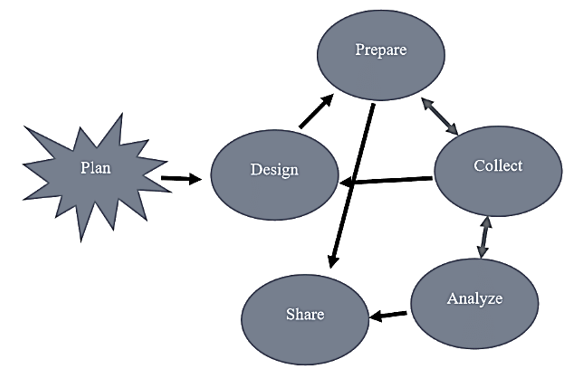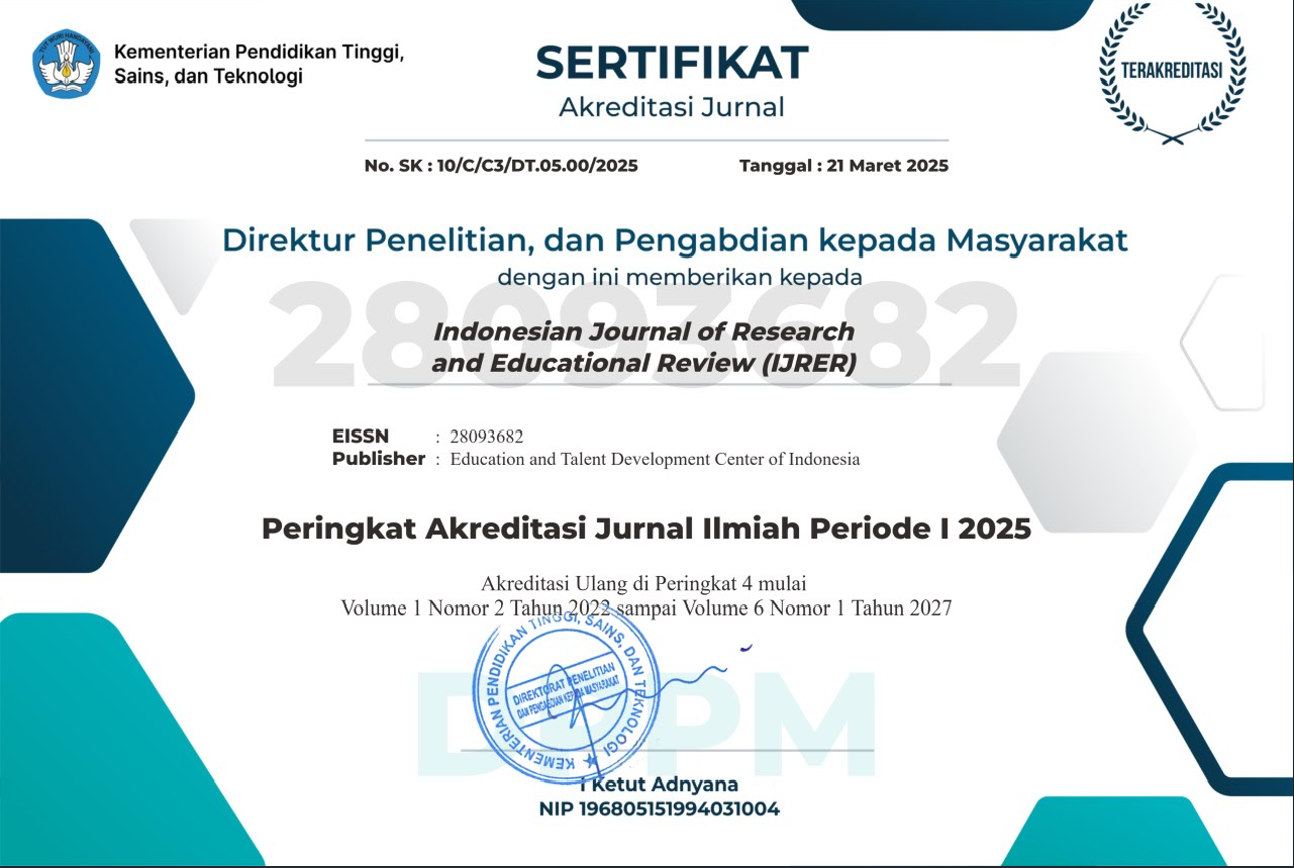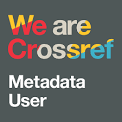Effectiveness of E-Learning Media in Asynchronous Learning: A Case Study in Higher Education
DOI:
https://doi.org/10.51574/ijrer.v4i4.3949Keywords:
Asynchronous, E-Learning Media, Higher Education, Participant Engagement, PASISAbstract
Asynchronous learning is important to worldwide higher education's digital transition. Despite extensive technology usage, issues about asynchronous learning media quality and pedagogy persist. Most studies have used the participants' final exam scores to evaluate the effectiveness of asynchronous learning. Consequently, this study seeks to evaluate the efficacy of e-learning media in facilitating asynchronous learning within the Officer Cadet Advancement Training Program (CATP or PASIS) at the higher education level. The primary focus of the research is to identify the level of participant engagement, their perceptions of the effectiveness of e-learning media, and the challenges faced by both participants and facilitators during the learning process. This research employs a mixed-methods approach, combining quantitative data collected through questionnaires administered to 47 respondents at Poltekpel Barombong and qualitative data gathered through in-depth interviews with participants, instructors, and e-learning administrators. The findings indicated that most participants regularly access the platform, complete assignments on time, and feel comfortable with self-directed learning. However, forum participation and learning motivation vary, especially among e-learning novices. While most respondents say e-learning media helps them understand the topic, they still need direct instruction, especially for technical content. Internet instability, lack of two-way communication, and participant digital incompetence are the key issues. Improved material quality, facilitator training, and solid support mechanisms improve e-learning deployment.
References
Abid, M., Suhrab, M. I. R., Osnin, N. A., Nik, W. M. N. S. W., & Hammad, M. (2024). Assessing the impact of self-e-learning, classroom teaching, and simulation training on learning of COLREG: a survey-based analysis among maritime students at the Universiti Malaysia Terengganu. Australian Journal of Maritime & Ocean Affairs, 1-18. https://doi.org/10.1080/18366503.2024.2398282
Abuhassna, H., & Alnawajha, S. (2023). The transactional distance theory and distance learning contexts: Theory integration, research gaps, and future agenda. Education Sciences, 13(2), 112. https://doi.org/10.3390/educsci13020112
Alenezi, M. (2023). Digital learning and digital institution in higher education. Education Sciences, 13(1), 88. https://doi.org/10.3390/educsci13010088
Alt, D. (2017). Constructivist learning and openness to diversity and challenge in higher education environments. Learning Environments Research, 20(1), 99-119. https://doi.org/10.1007/s10984-016-9223-8
Al Abri, M. H., Al Aamri, A. Y., & Elhaj, A. M. A. (2024). Enhancing student learning experiences through integrated constructivist pedagogical models. European Journal of Contemporary Education and E-Learning, 2(1), 130-149.
Al-Fraihat, D., Joy, M., Masa'deh, R. E., & Sinclair, J. (2020). Evaluating E-learning systems success: An empirical study. Computers in human behavior, 102, 67-86. https://doi.org/10.1016/j.chb.2019.08.004
Bixler, A., Eslinger, M., Kleinschmit, A. J., Gaudier-Diaz, M. M., Sankar, U., Marsteller, P., ... & Robertson, S. (2021). Three steps to adapt case studies for synchronous and asynchronous online learning. Journal of microbiology & biology education, 22(1), 10-1128. https://doi.org/10.1128/jmbe.v22i1.2337
Cahyadi, T., & Mirianto, A. D. (2023). Peran Teknologi Informasi Dalam Keberhasilan Pendidikan Dan Pelatihan di Bidang Pelayaran. Journal of Syntax Literate, 8(2). https://doi.org/10.36418/syntax-literate.v8i2.11381
Danaher, M., & Danaher, P. A. (2019). Asynchronous learning. In Encyclopedia of Educational Innovation (pp. 1-6). Springer, Singapore.
Drumm, S. (2025). Applying individual strategies enhances learning in asynchronous learning paths. Computers and Education Open, 8, 100257. https://doi.org/10.1016/j.caeo.2025.100257
Du, X., Zhang, M., Shelton, B. E., & Hung, J. L. (2022). Learning anytime, anywhere: a spatio-temporal analysis for online learning. Interactive Learning Environments, 30(1), 34-48. https://doi.org/10.1080/10494820.2019.1633546
Fadhilah, M., Sutrisna, S., Muslimah, S. N., & Ihsan, M. T. (2021). An exploring methods in online learning: Synchronous and asynchronous. ETDC: Indonesian Journal of Research and Educational Review, 1(1), 74-81. https://doi.org/10.51574/ijrer.v1i1.55
Fructuoso, I. N., Albó, L., & Beardsley, M. (2022). University students’ preference for flexible teaching models that foster constructivist learning practices. Australasian Journal of Educational Technology, 38(4), 22-39. https://doi.org/10.14742/ajet.7968
Ghilay, Y. (2024). Rapid Transition to Online Learning: Faculty Distance Training on LMS, Synchronous/Asynchronous Learning, and Computer-Assisted Assessment. Journal of Education and Learning, 13(6), 10-5539. https://doi.org/10.5539/jel.v13n6p61
Hadullo, K., Oboko, R., & Omwenga, E. (2018). Factors affecting asynchronous e-learning quality in developing countries university settings. International journal of Education and Development using ICT, 14(1). https://www.learntechlib.org/p/183551/
Halim, U., & Hidayat, N. (2025). The Sequential Levels of the Digital Divide in the Educational Domain Among Indonesian University Students. INJECT (Interdisciplinary Journal of Communication), 10(1), 179-208. https://doi.org/10.18326/inject.v10i1.4427
Hung, C. T., Wu, S. E., Chen, Y. H., Soong, C. Y., Chiang, C. P., & Wang, W. M. (2024). The evaluation of synchronous and asynchronous online learning: student experience, learning outcomes, and cognitive load. BMC medical education, 24(1), 326. https://doi.org/10.1186/s12909-024-05311-7
Kalamas Hedden, M., Worthy, R., Akins, E., Slinger-Friedman, V., & Paul, R. C. (2017). Teaching Sustainability Using an Active Learning Constructivist Approach: Discipline-Specific Case Studies in Higher Education. Sustainability, 9(8), 1320. https://doi.org/10.3390/su9081320
Kim, S., & Kim, D. J. (2021). Structural relationship of key factors for student satisfaction and achievement in asynchronous online learning. Sustainability, 13(12), 6734. https://doi.org/10.3390/su13126734
Li, J., & Xue, E. (2023). Dynamic interaction between student learning behaviour and learning environment: Meta-analysis of student engagement and its influencing factors. Behavioral Sciences, 13(1), 59. https://doi.org/10.3390/bs13010059
Liu, M., & Yu, D. (2023). Towards intelligent E-learning systems. Education and Information Technologies, 28(7), 7845-7876. https://doi.org/10.1007/s10639-022-11479-6
Loeng, S. (2018). Various ways of understanding the concept of andragogy. Cogent Education, 5(1), 1496643. https://doi.org/10.1080/2331186X.2018.1496643
Matsieli, M., & Mutula, S. (2024). COVID-19 and digital transformation in higher education institutions: Towards inclusive and equitable access to quality education. Education Sciences, 14(8), 819. https://doi.org/10.3390/educsci14080819
Metz, C. J., & Metz, M. J. (2022). The benefits of incorporating active learning into online, asynchronous coursework in dental physiology. Advances in Physiology Education, 46(1), 11-20. https://doi.org/10.1152/advan.00110.2021
Mhlanga, D., Denhere, V., & Moloi, T. (2022). COVID-19 and the key digital transformation lessons for higher education institutions in South Africa. Education sciences, 12(7), 464. https://doi.org/10.3390/educsci12070464
Moorhouse, B. L., & Wong, K. M. (2022). Blending asynchronous and synchronous digital technologies and instructional approaches to facilitate remote learning. Journal of Computers in Education, 9(1), 51-70. https://doi.org/10.1007/s40692-021-00195-8
Muzaini, M., Rahayuningsih, S., Nasrun, N., & Hasbi, M. (2021). Creativity in synchronous and asynchronous learning during the covid-19 pandemic: a case study. AKSIOMA: Jurnal Program Studi Pendidikan Matematika, 10(3), 1722-1735. http://dx.doi.org/10.24127/ajpm.v10i3.3897
Neffati, O. S., Setiawan, R., Jayanthi, P., Vanithamani, S., Sharma, D. K., Regin, R., ... & Sengan, S. (2021). An educational tool for enhanced mobile e-Learning for technical higher education using mobile devices for augmented reality. Microprocessors and Microsystems, 83, 104030. https://doi.org/10.1016/j.micpro.2021.104030
Özbey, M., & Kayri, M. (2023). Investigation of factors affecting transactional distance in E-learning environment with artificial neural networks. Education and Information Technologies, 28(4), 4399-4427. https://doi.org/10.1007/s10639-022-11346-4
Perhubungan, K. (2023). Kementerian Perhubungan. Direktorat Jenderal Sipil, 13.
Phanphech, P., Tanitteerapan, T., Mungkung, N., Arunrungrusmi, S., Chunkul, C., Songruk, A., ... & Kinoshita, H. (2022). An analysis of student anxiety affecting on online learning on conceptual applications in Physics: Synchronous vs. asynchronous learning. Education Sciences, 12(4), 278. https://doi.org/10.3390/educsci12040278
Pramesworo, I. S., Sembiring, D., Sarip, M., Lolang, E., & Fathurrochman, I. (2023). Identification of new approaches to information technology-based teaching for successful teaching of millennial generation entering 21st century education. Jurnal Iqra': Kajian Ilmu Pendidikan, 8(1), 350-370. https://doi.org/10.25217/ji.v8i1.2722
Ratan, R., Ucha, C., Lei, Y., Lim, C., Triwibowo, W., Yelon, S., ... & Chen, V. H. H. (2022). How do social presence and active learning in synchronous and asynchronous online classes relate to students’ perceived course gains?. Computers & Education, 191, 104621. https://doi.org/10.1016/j.compedu.2022.104621
Raviolo, P., Messina, S., Mauro, I., & Rondonotti, M. (2021). E-tutor Profiles in Online Higher Education: Skills and Organizational Models. In International Workshop on Higher Education Learning Methodologies and Technologies Online (pp. 187-196). Cham: Springer International Publishing. https://doi.org/10.1007/978-3-030-96060-5_14
Roach, V. A., & Attardi, S. M. (2022). Twelve tips for applying Moore’s Theory of Transactional Distance to optimize online teaching. Medical Teacher, 44(8), 859-865.
Rosen, D., & Kelly, A. M. (2023). Mixed methods study of student participation and self-efficacy in remote asynchronous undergraduate physics laboratories: contributors, lurkers, and outsiders. International Journal of STEM Education, 10(1), 34. https://doi.org/10.1186/s40594-023-00428-5
Schreiber, W. B. (2022). Teaching in a pandemic: Adapting preparations for asynchronous remote learning using three evidence-based practices. Scholarship of Teaching and Learning in Psychology, 8(2), 106. https://psycnet.apa.org/buy/2022-04154-001
Servant-Miklos, V., & Noordegraaf-Eelens, L. (2021). Toward social-transformative education: An ontological critique of self-directed learning. Critical Studies in Education, 62(2), 147-163. https://doi.org/10.1080/17508487.2019.1577284
Sharma, A., Bharti, & Pandey, A. (2024). Unleashing the Potential of Technology-Driven Learning Management Systems for Student-Centric Excellence to Empower Higher Education. Engineering Proceedings, 59(1), 195. https://doi.org/10.3390/engproc2023059195
Stecuła, K., & Wolniak, R. (2022). Influence of COVID-19 pandemic on dissemination of innovative e-learning tools in higher education in Poland. Journal of Open Innovation: Technology, Market, and Complexity, 8(2), 89. https://doi.org/10.3390/joitmc8020089
Varkey, T. C., Varkey, J. A., Ding, J. B., Varkey, P. K., Zeitler, C., Nguyen, A. M., ... & Thomas, C. R. (2023). Asynchronous learning: a general review of best practices for the 21st century. Journal of Research in Innovative Teaching & Learning, 16(1), 4-16. https://doi.org/10.1108/JRIT-06-2022-0036
Xianxiao, Z. (2024). Simulation research on interactive entertainment e-learning based on visual saliency testing in music multimedia teaching system. Entertainment Computing, 50, 100676. https://doi.org/10.1016/j.entcom.2024.100676
Xiao, J. (2025). Revisiting the theory of transactional distance: Implications for open, distance, and digital education in the 21st century. American Journal of Distance Education, 39(1), 113-126. https://doi.org/10.1080/08923647.2024.2303328
Yaqin, L. N., Prasojo, L. D., Haji-Othman, N. A., Yusof, N., & Habibi, A. (2023). Addressing the digital divide in Indonesian higher education: Insights, implications, and potential solutions. In From digital divide to digital inclusion (pp. 291-307). Springer, Singapore. https://doi.org/10.1007/978-981-99-7645-4_13
Yildiz Durak, H. (2025). What makes an effective online course experience?: Student perceptions and needs for online course design elements in the context of feedback and collaborative learning. Technology, Knowledge and Learning, 30(2), 969-990. https://doi.org/10.1007/s10758-024-09748-z
Yin, R. K. (2018). Case study research and applications (Vol. 6). Thousand Oaks, CA: Sage.
Zeng, H., & Luo, J. (2024). Effectiveness of synchronous and asynchronous online learning: a meta-analysis. Interactive Learning Environments, 32(8), 4297-4313. https://doi.org/10.1080/10494820.2023.2197953
Zheng, Y. (2024). E-learning and speech dynamic recognition based on network transmission in music interactive teaching experience. Entertainment Computing, 50, 100716. https://doi.org/10.1016/j.entcom.2024.100716
Zsifkovits, M., Amplatz, L., Triebner, N., Utz, J., Kornhuber, J., & Spitzer, P. (2025). Randomized controlled trial of asynchronous vs. synchronous online teaching formats: equal knowledge after training, greater acceptance and lower intrinsic motivation through asynchronous online learning. BMC Medical Education, 25(1), 850. https://doi.org/10.1186/s12909-025-07481-4

Downloads
Published
How to Cite
Issue
Section
License
Copyright (c) 2025 Asce Patongloan, Ratnawati Prayogi, Freddy J. Rumambi, Alfred Inkriwang

This work is licensed under a Creative Commons Attribution-ShareAlike 4.0 International License.













1.png)













